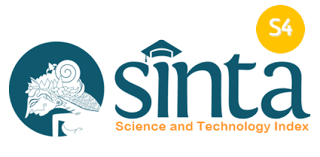ANALISIS PERTANYAAN GURU DALAM INTERAKSI BELAJAR-MENGAJAR BAHASA INDONESIA PADA SISWA KELAS V SEKOLAH DASAR NEGERI 7 SUSUT, BANGLI TAHUN PELAJARAN 2007/2008
DOI:
https://doi.org/10.36733/jsp.v1i2.483Keywords:
teacher’s question, teaching-learning interaction, the type of questions, cognitive level questions, the function of the questionAbstract
Teachers who do not have the skills in asking questions, who do not develop an attitude like to ask question, and who do not ask questions when carrying out the teaching-learning process, will get difficulty in directing the process of student learning. To improve the quality of the questions in the process of teaching and learning Indonesian language in elementary school is required data and information through scientific research. Therefore, this study was conducted to assess the problem as follows: (1) the type of teacher questions in the interaction of teaching and learning the Indonesian language, (2) the cognitive level of teacher questions in the interaction of teaching and learning the Indonesian language, and (3) functions of teacher questions in the interaction of teaching and learning Indonesian language.
To achieve this goal, this study uses a qualitative descriptive design. It is assigned one teacher to teach Indonesian language to fifth grade students of SD Negeri 1 Susut, Bangli. The research data collected by observation method (aided by the recording process of teaching and learning) and interview. Data analysis is done with a series of processes, namely data reduction, data presentation, and drawing conclusions.
The results of this study reveal that the teacher ask questions in the teaching-learning interaction. In terms of type, the type of narrow questions as many as 62 questions = 62.62% and the type of broad questions as much as 37 questions = 37.37%. In terms of cognitive level, the knowledge questions as much as 40 questions = 43.01% , the understanding questions as much as 42 questions = 45.16%, the application questions as much as 2 questions = 2.15% , the analysis questions as much as 1 question = 1.07%, synthesis question as much as 4 questions = 4, 30%, evaluation question as much as 4 questions= 4.30%. In terms of the function, the teacher’s question is inappropriate with the function of the question in teaching-learning process.










